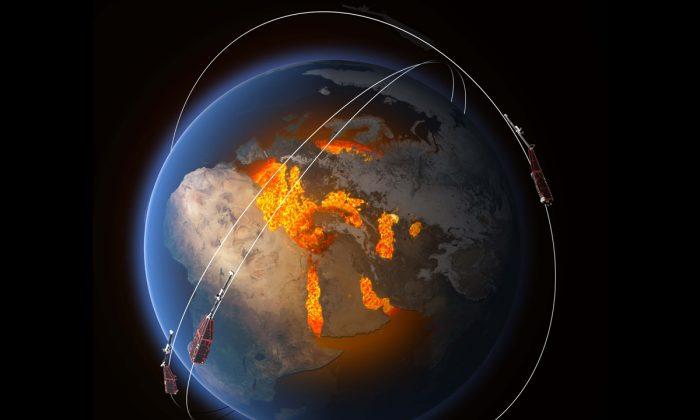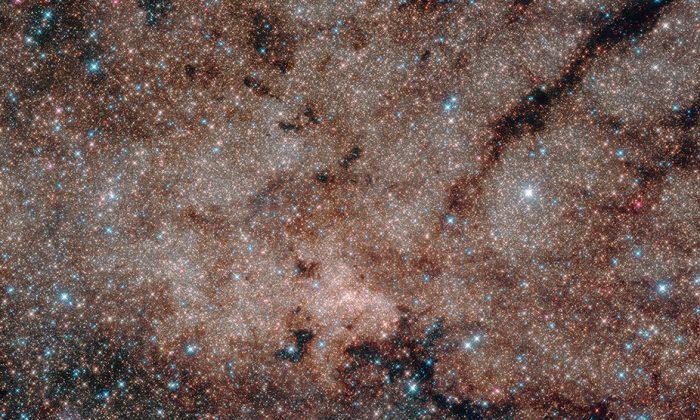
Picture the scene, 2.7 billion years ago, of a younger Earth. Lava pours across the land and reaches a sea. The rapid cooling of the hot lava by the water causes a glass-like surface to form.
While the release of the pressure from the depths of the mantle to the atmosphere allows dissolved gasses to bubble out like opening a bottle of fizzy soft drink. Just like when you’ve only partly opened the bottle and the pressure is still above the atmosphere around the bubbles that form are smaller than if you just open it fully.
Those surprisingly large bubbles (which are seen in white, having since filled in with calcite) indicate that the background air pressure was at most half of the current air pressure we experience today.
This is similar to what you would experience on a mountain 5 kilometers high, yet thanks to the glass-like “lava toes” this lava undoubtedly flowed at sea-level. Thanks to other Australian rocks of a similar age bearing fossilized single cell life (known as stromatolites) we now life had arisen and was flourishing in this thinner Earth.
As the Sun was definitely dimmer and hence cooler how did Earth not freeze without a thicker blanketing layer of atmosphere? One suggestion is that water can more easily boil in low pressure (on top of that mountain your kettle wouldn’t boil at 100 degrees centigrade but instead closer to 60).
Increased levels of water vapor or other greenhouse gasses, such as methane, may hold the answer. However, for now it’s clear that life can form and thrive across a wider range of pressures than we may have hoped, and certainly increase the narrows bounds we consider for potentially life-sustaining alien worlds.
Count Again
A more generous consideration of what planets may harbor life is particularly timely as NASA’s Kepler satellite revealed 1,284 planets, doubling the number known.
Amongst this treasure trove of confirmed alien worlds are 550 worlds small enough to potentially be rocky life Earth, and nine are in the habitable zone of their star. This is a band around a star that is far enough away that the water isn’t boiled off, but not so far that it freezes into ice, and instead might exist as a liquid, hence the alternative name of the “Goldilocks Zone.”

The next step in determining a world’s suitability for life is to examine the atmosphere. This is a challenging observation but next generation telescopes such as NASA’s James Webb Space Telescope will be able to discern the content and temperature of the air of these worlds.
Thanks to learning about our own planet’s history we might not be quite so picky about these other alien worlds when considering their potential for harboring life.
Alan Duffy is a research fellow at the Swinburne University of Technology. This article was originally published on The Conversation.



